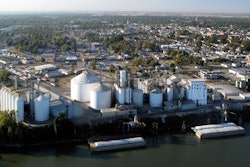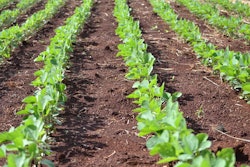
An ever-increasing population coupled with a changing agricultural workforce has compelled the animal agriculture industry to make sustainability its top priority.
Each animal agriculture sector has initiated an industry-driven program to define sustainability and measure its commitment to become more sustainable.
Representatives of the meat, poultry and animal feed industries came together for the Animal Agriculture Sustainability Summit during the Animal Agriculture Sustainability Summit at the 2023 International Production and Processing Expo (IPPE) in Atlanta to focus on the development of industry programs and tools to produce more protein in a sustainable fashion.
As keynote speaker, Robert Bonnie, Undersecretary Farm Production & Conservation with the USDA, gave insights into the benefits the animal agriculture industry can realize through various USDA efforts.
“Every farmer is different, every ranch is different,” noted Bonnie. “We must provide a menu of options. Incentives matter but providing the best options for the individual farm and farmer is as important.”
Rural populations care as much about the environment and climate change as anyone else, says Bonnie. Where they differ, he noted, is their skepticism on how to fix the problem.
Programs developed with agricultural industry for agricultural industry
Bonnie says one of the challenges with developing sustainability policy is to deploy it rapidly. Secondly, he says the policy must produce real results. Most importantly, policy needs to be developed with agriculture for agriculture.
“We have to build infrastructure within the USDA that supports these approaches and propels them forward,” he noted.
He doesn’t want to dictate policy from the top down and believes that policy built with ag for ag will make gains and be supported in a bipartisan fashion and by the public.
Climate-Smart Commodities
Bonnie notes at the USDA, their biggest effort has been Partnerships for Climate-Smart Commodities.
Through the program, the USDA is committed to supporting a diverse range of farmers, rancher and private forest landowners. This effort will expand markets for America’s climate-smart commodities, leverage the greenhouse gas benefits of climate-smart commodity production, and provide direct, meaningful benefits to production agriculture, including for small and underserved producers, said Bonnie.
USDA is investing more than $3.1 billion for 141 projects through this effort and all the projects that will be funded require meaningful involvement of small and underserved producers.
One example is the Midwest Climate-Smart Commodity Program.
The lead partner on this project is the Iowa Soybean Association (ISA). PCSC will provide ISA with $75 to $95 million to be administered by the Soil & Water Outcomes Fund (SWOF.) The program will run for five years and provide direct incentives to farmers operating in 12 states who implement practices resulting in positive environmental outcomes.
The funding will also be used to increase farmer enrollment in the program, along with outcome quantification, measurement, reporting and verification.
When asked if additional funding would be available for the Climate-Smart Commodity Program in the future, Bonnie said chances are good because there are a lot of ideas and interest is high.
“There’s been a lot of interest in this,” says Bonnie. “But we have to prove it works.”
Related reading


















